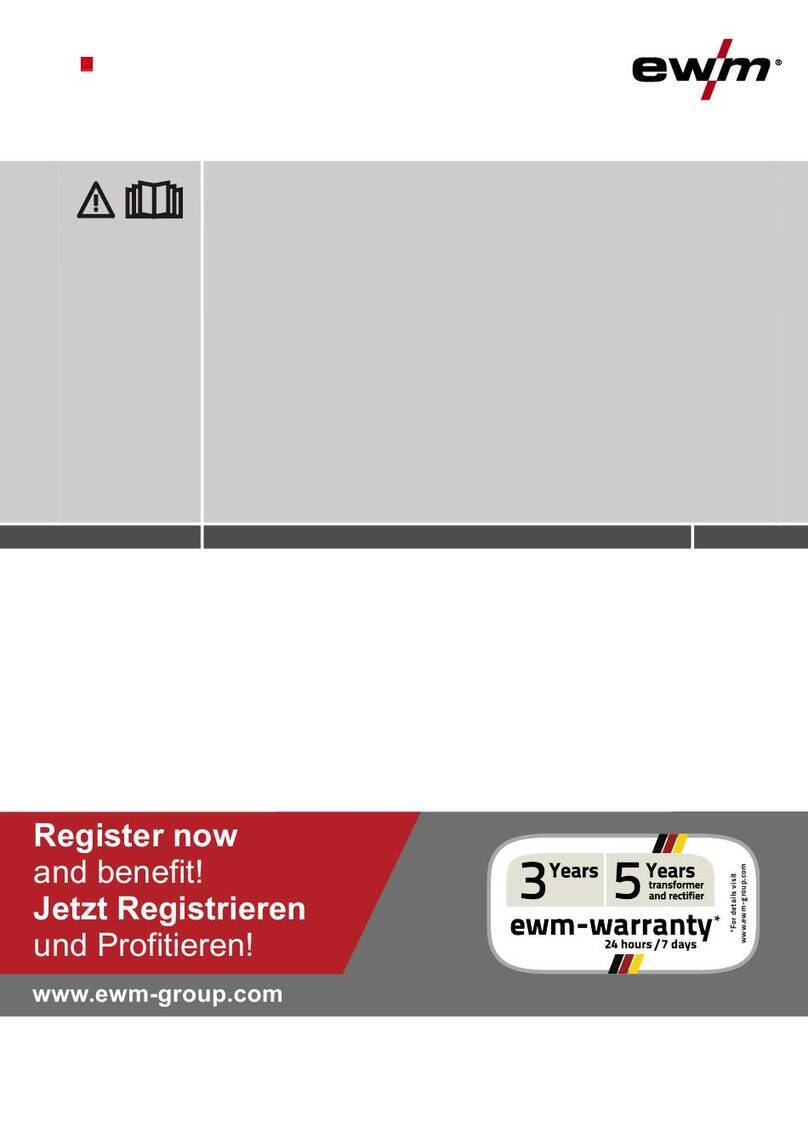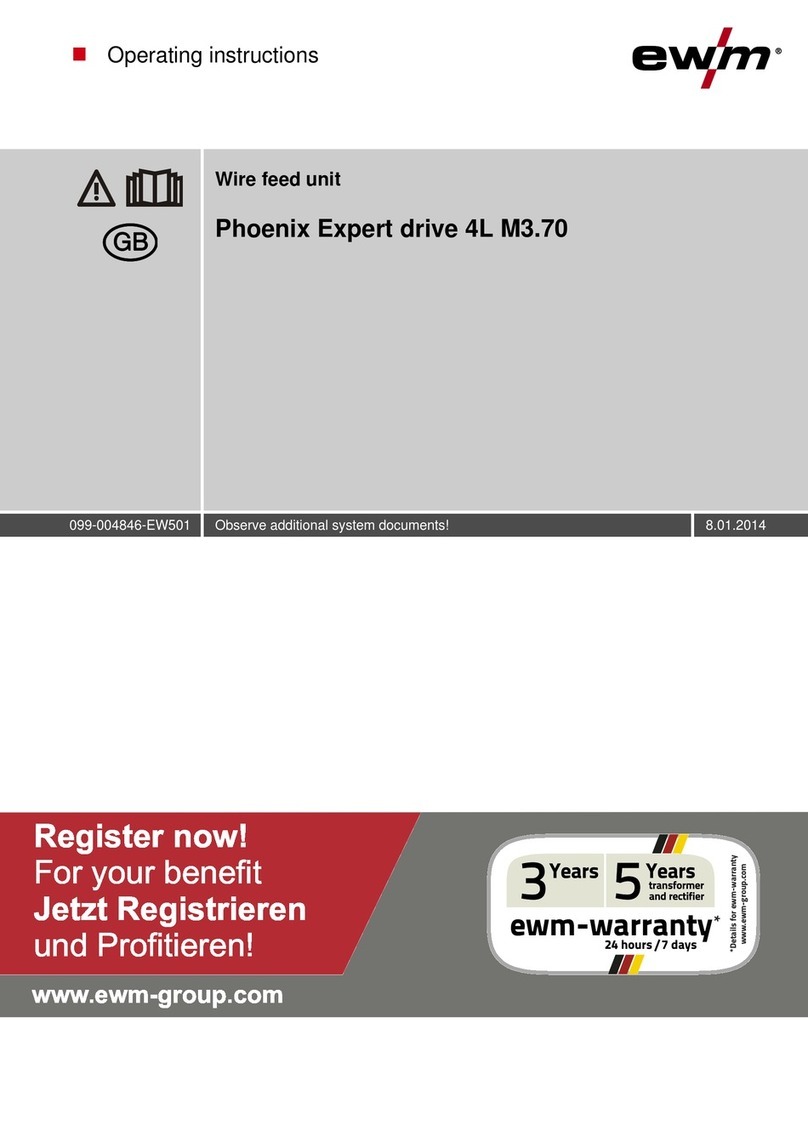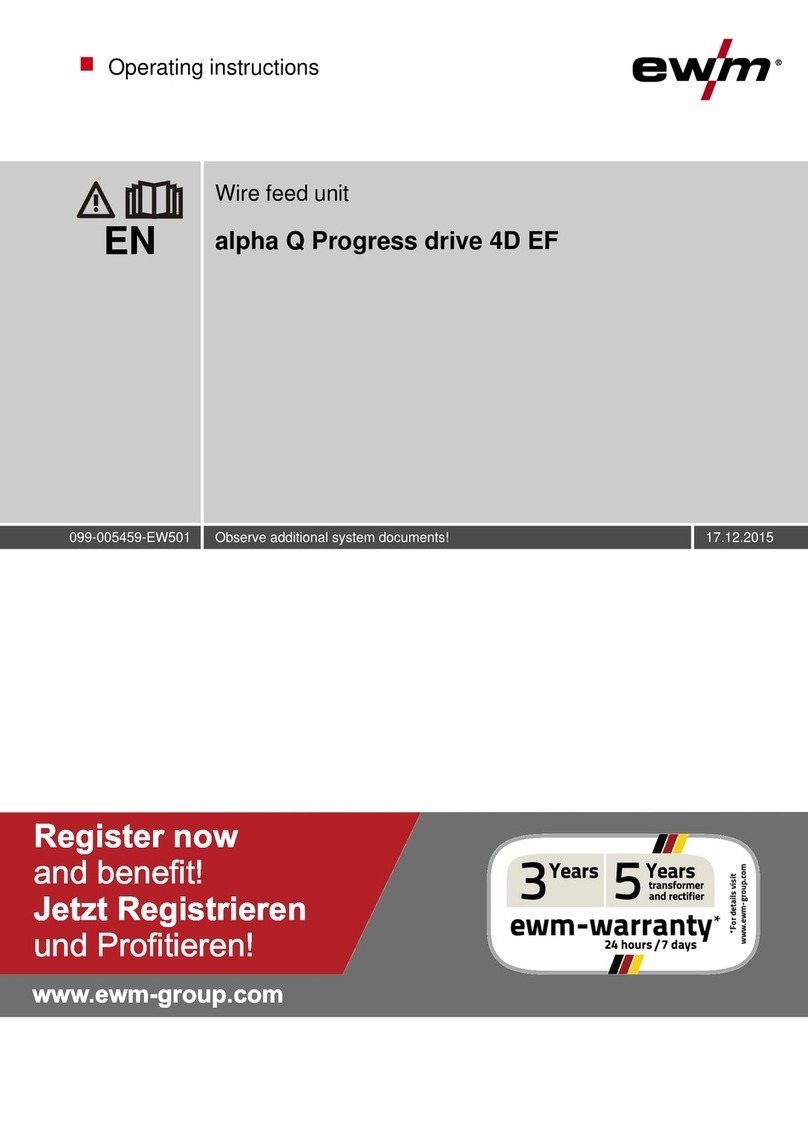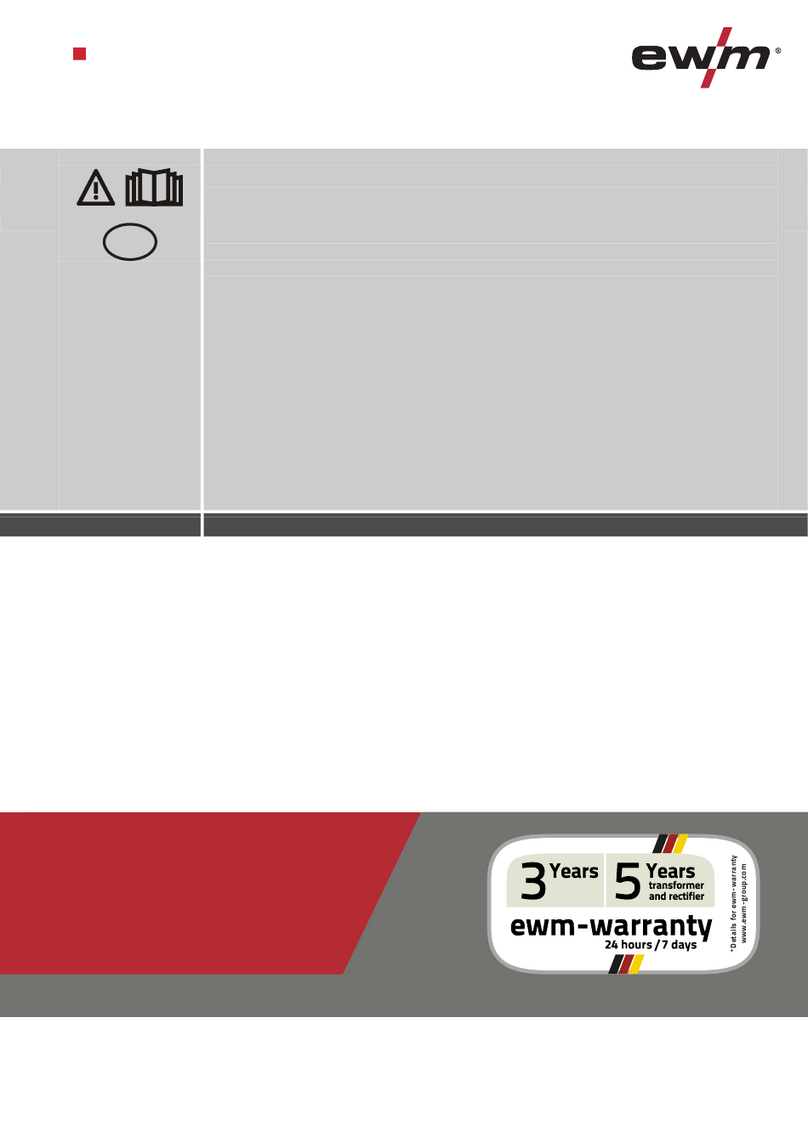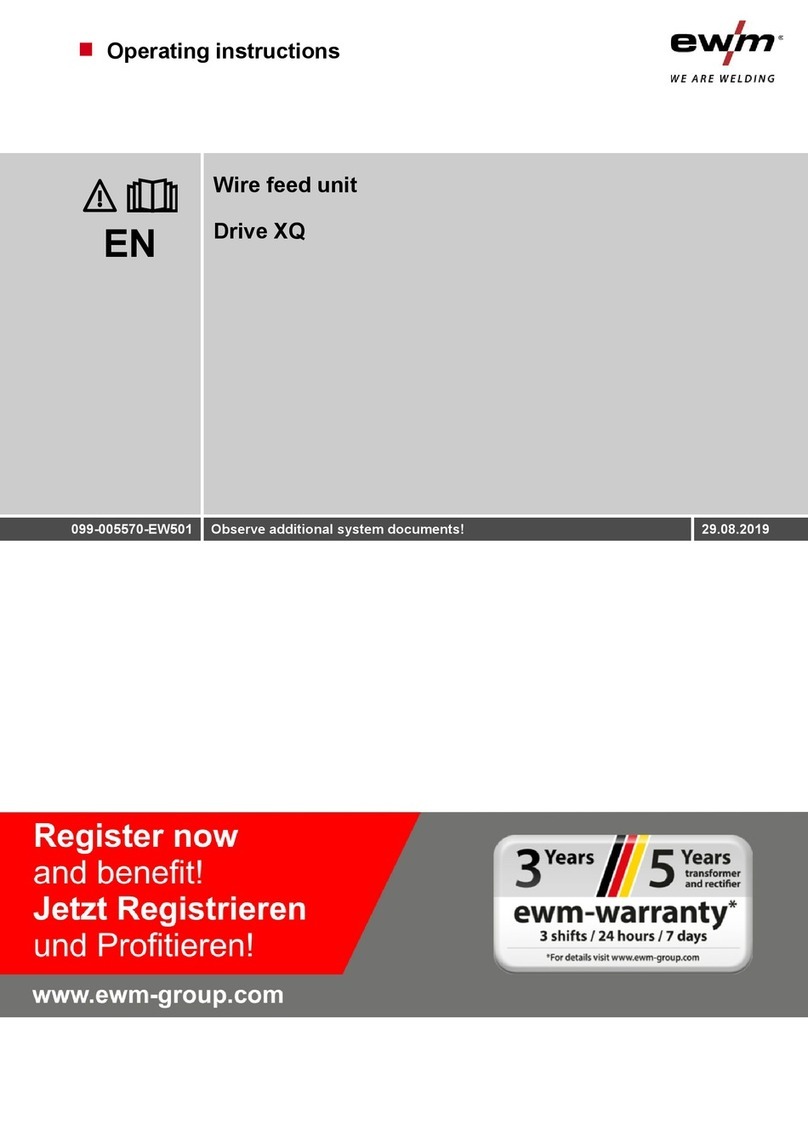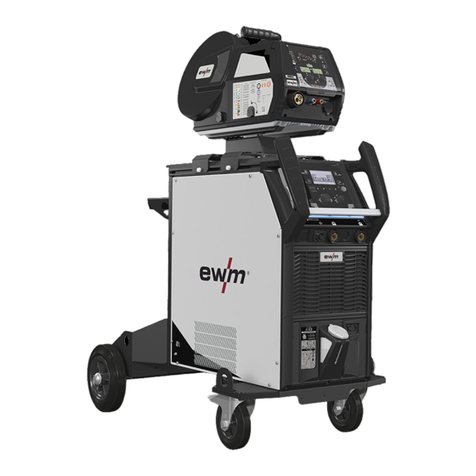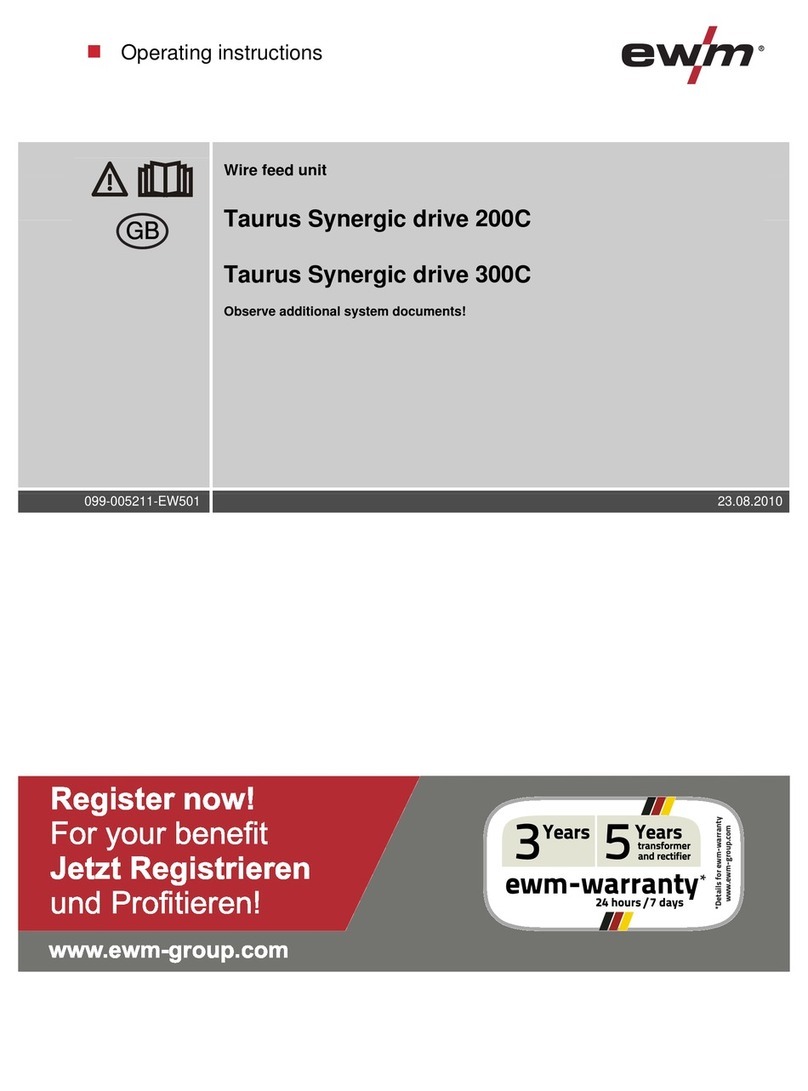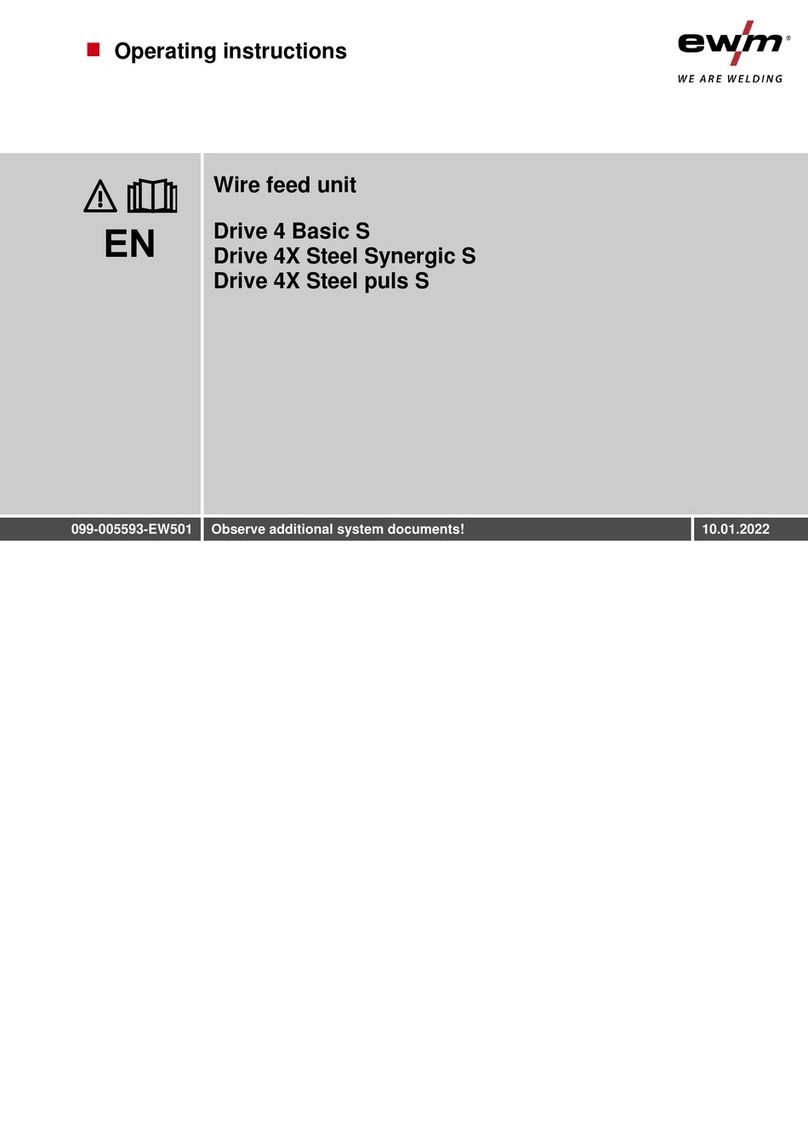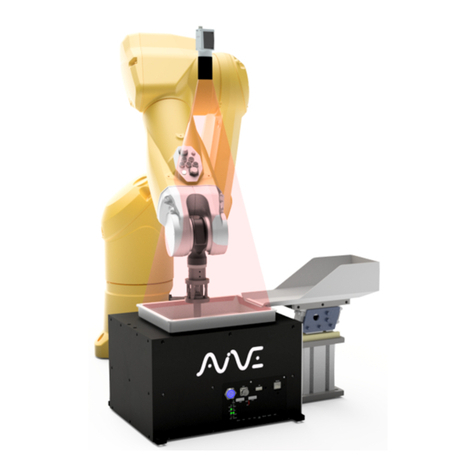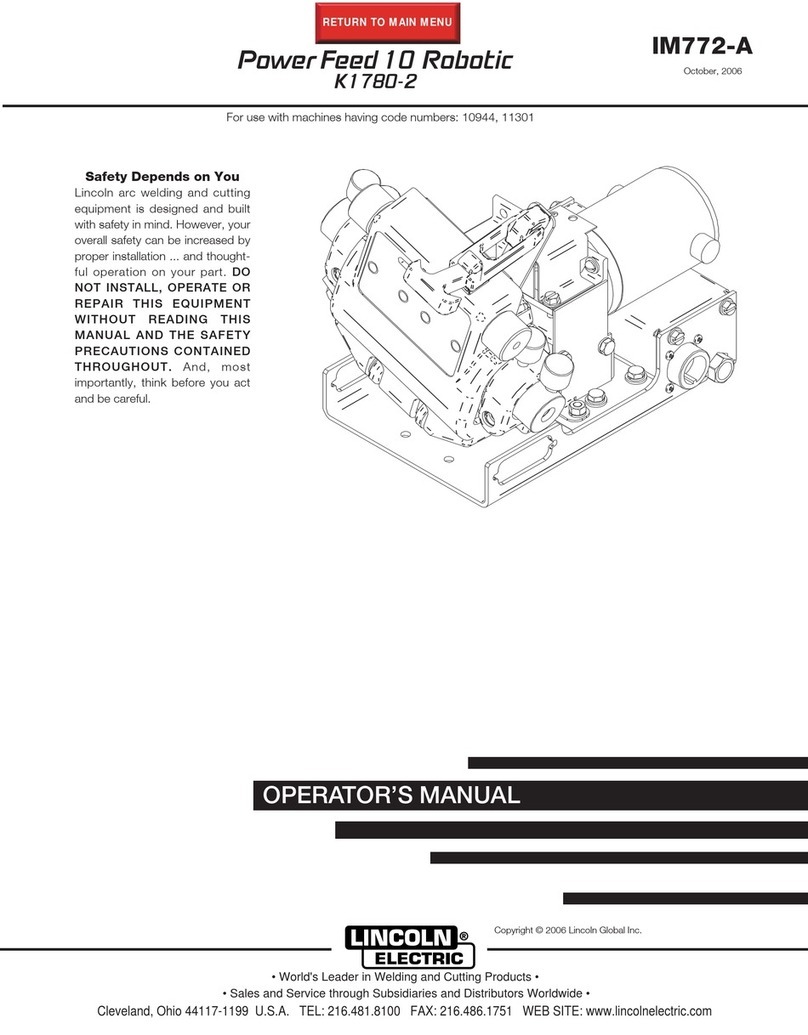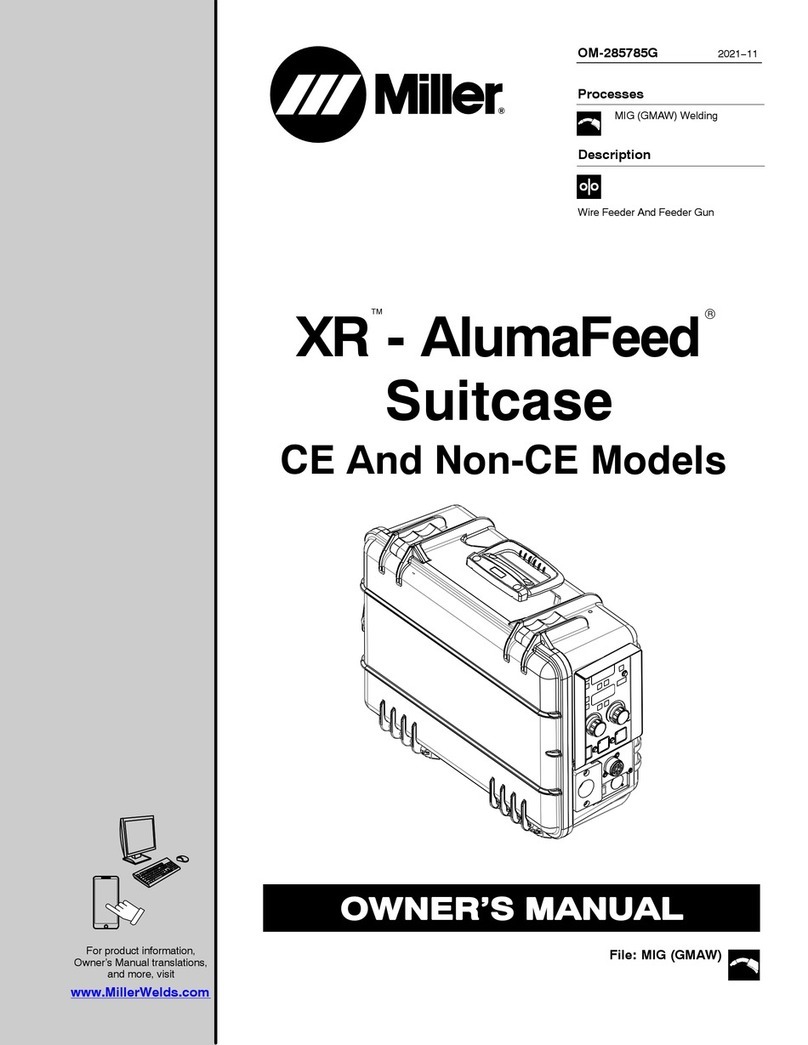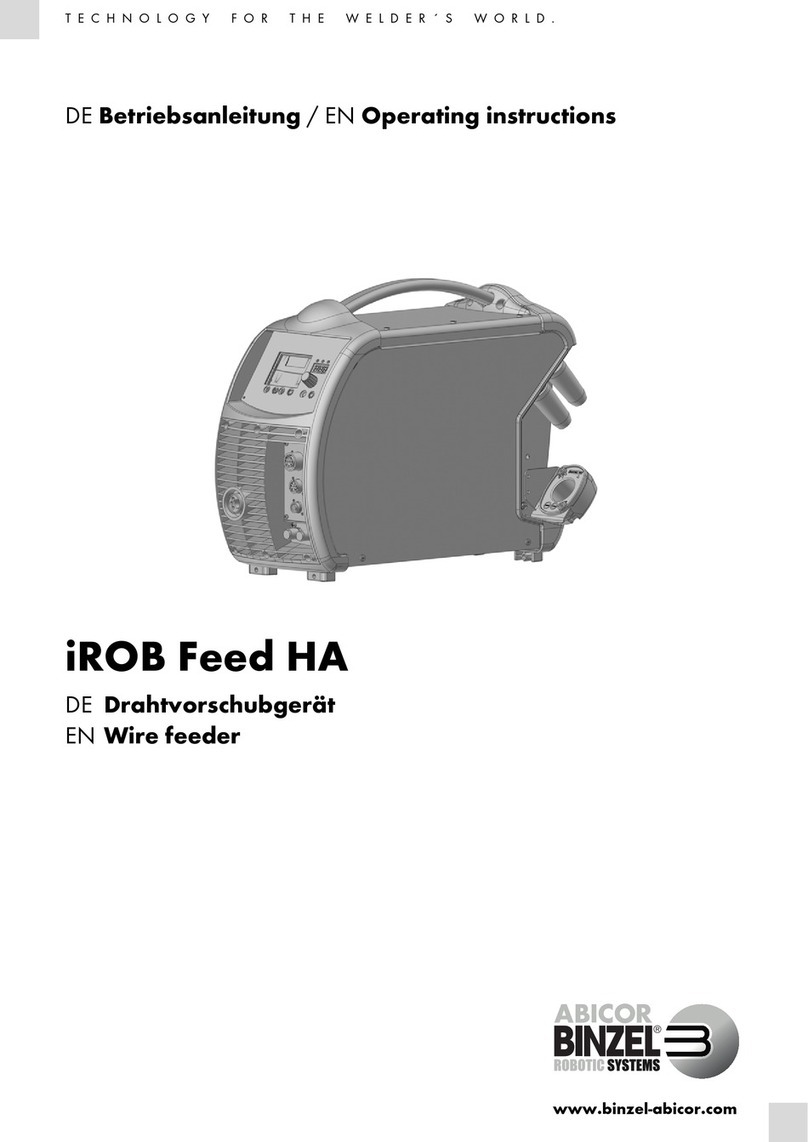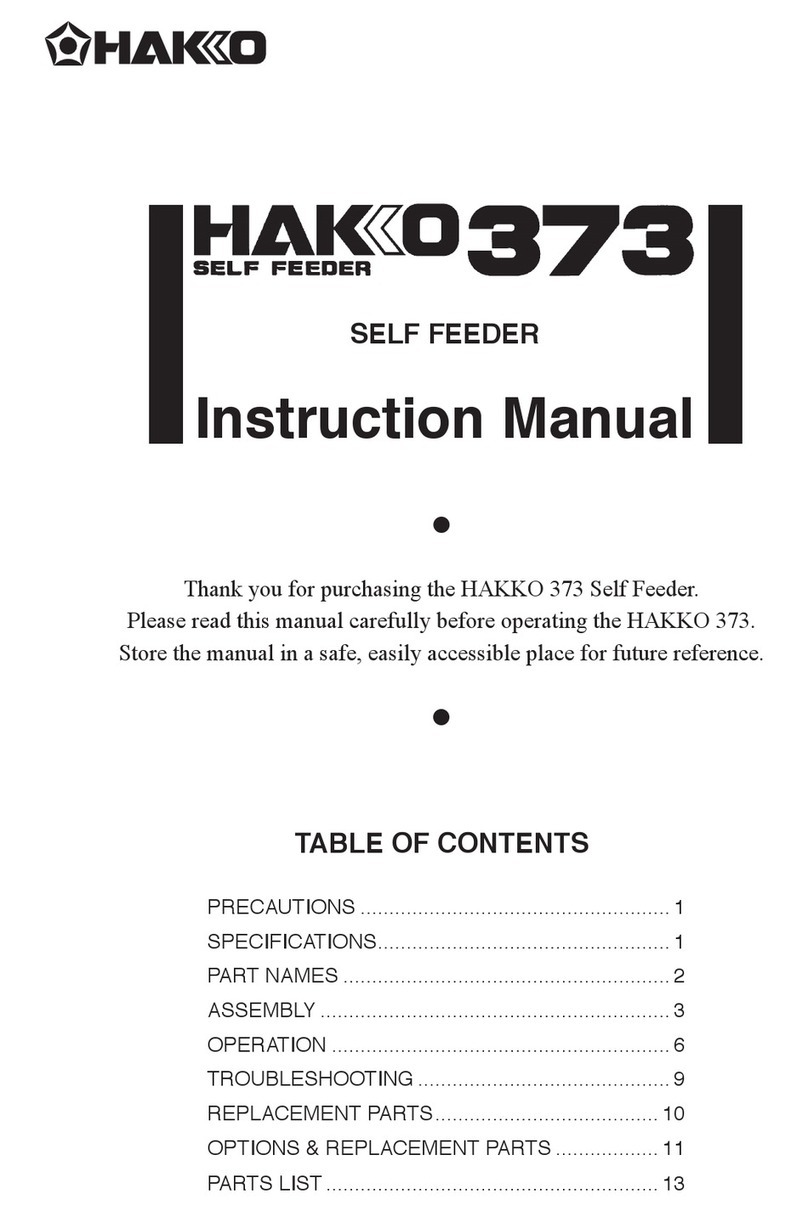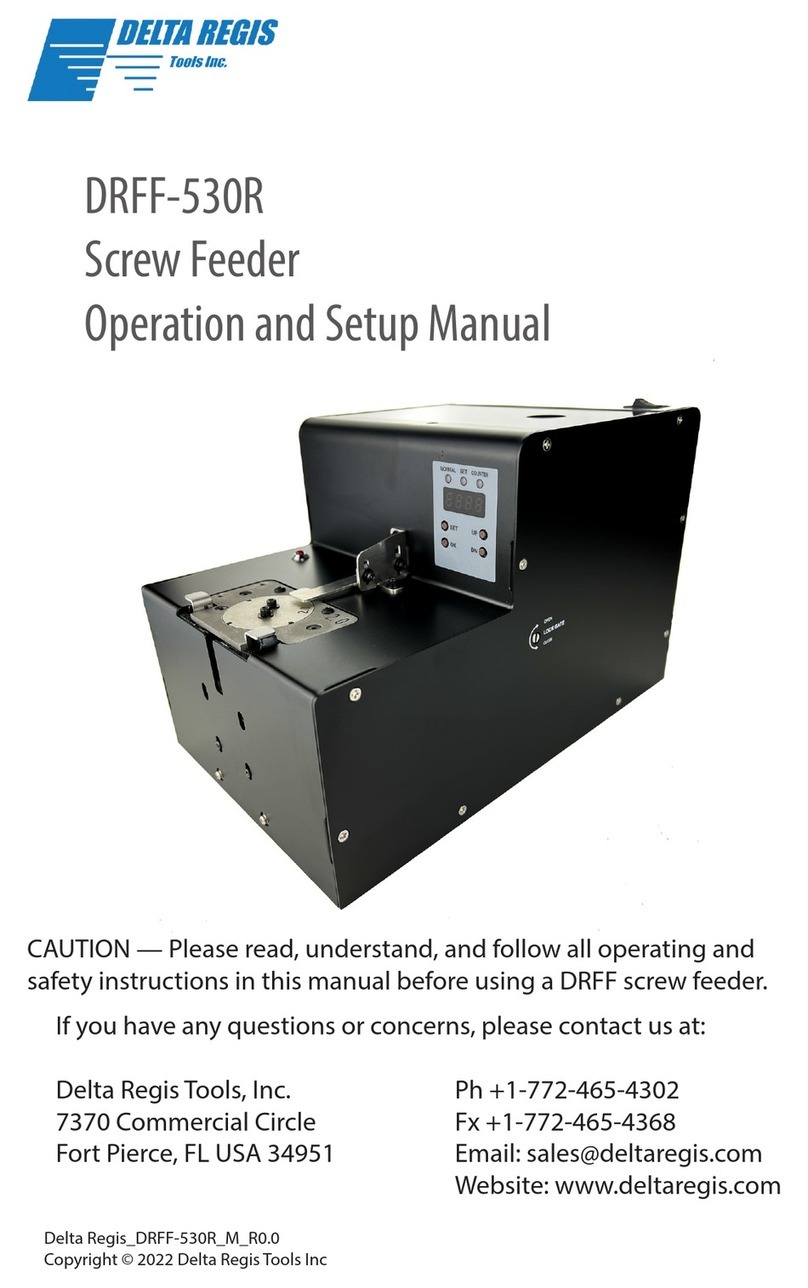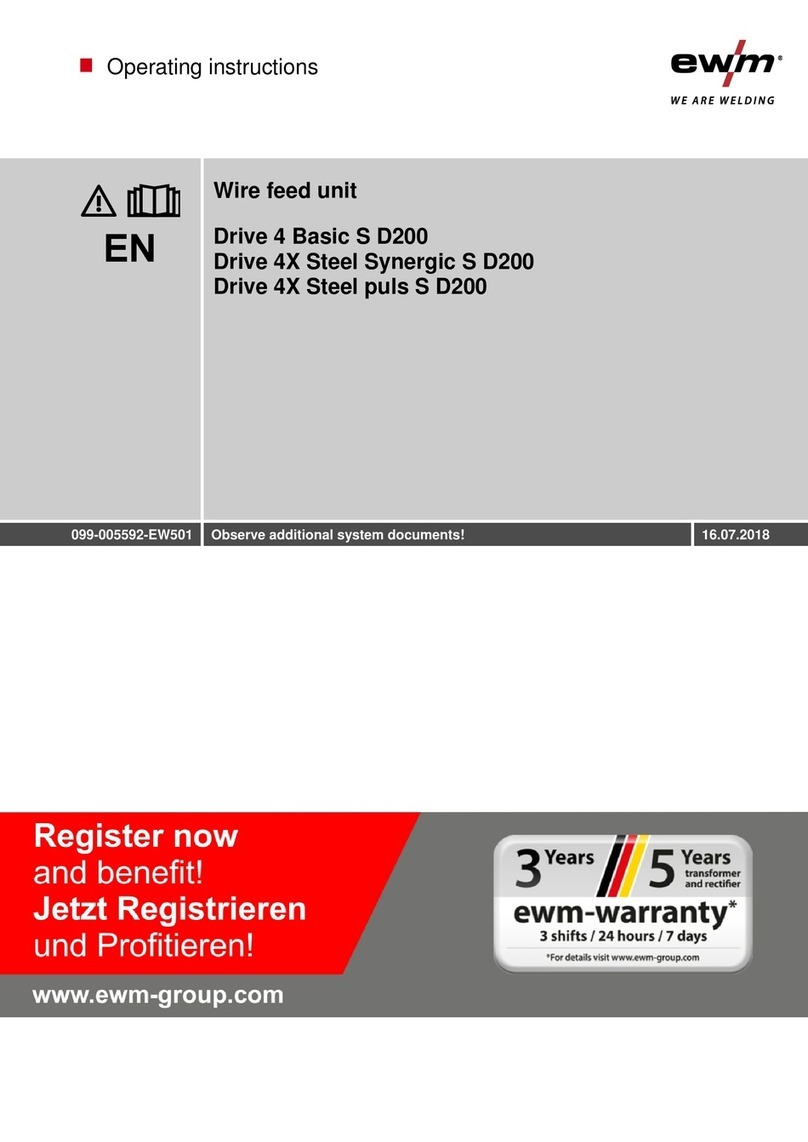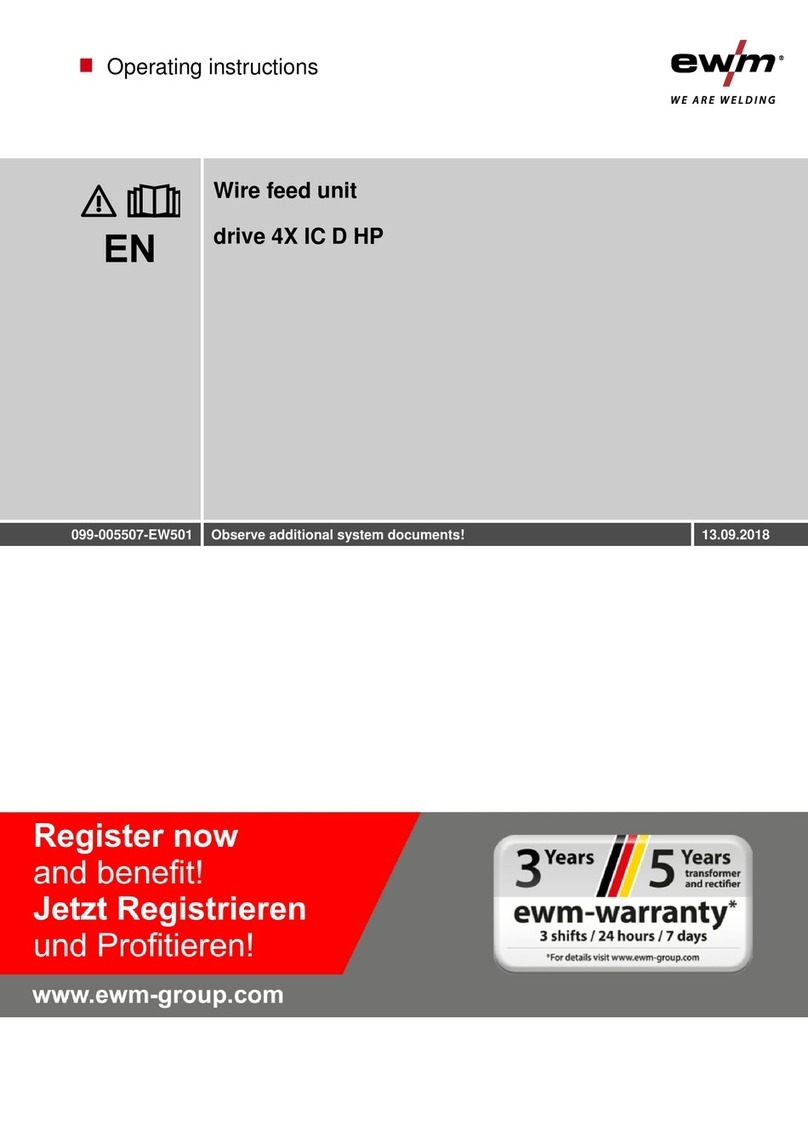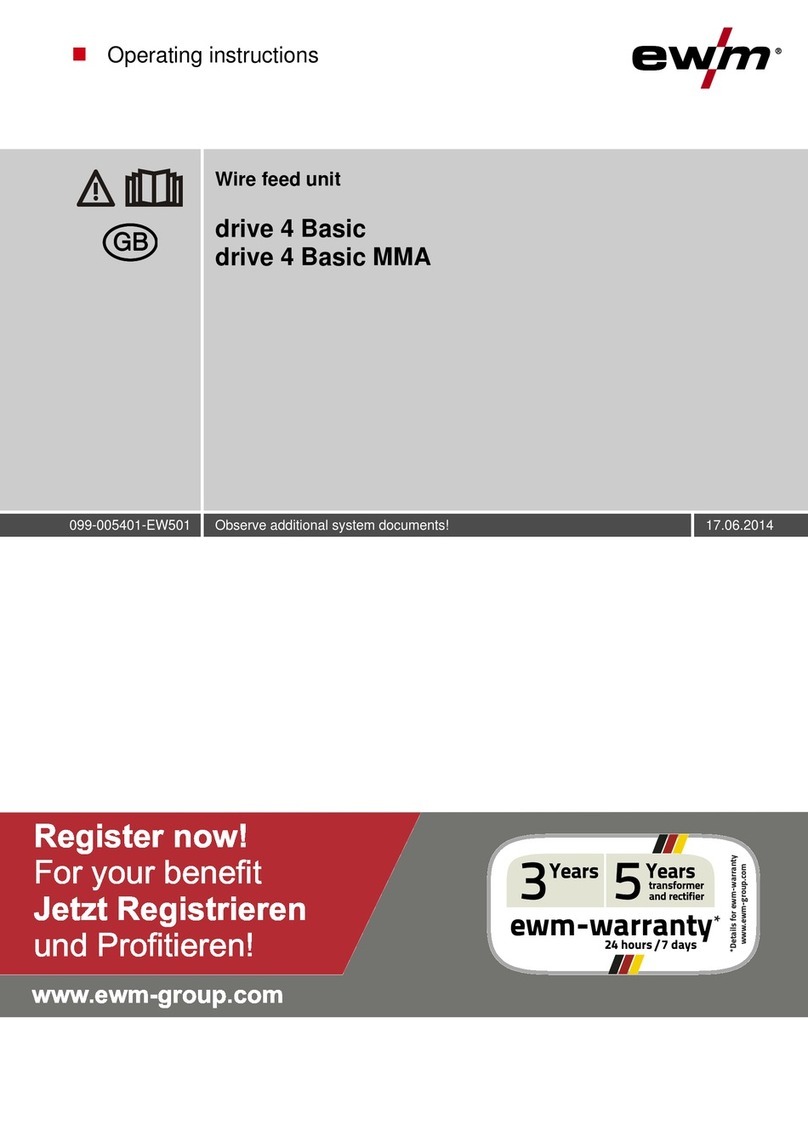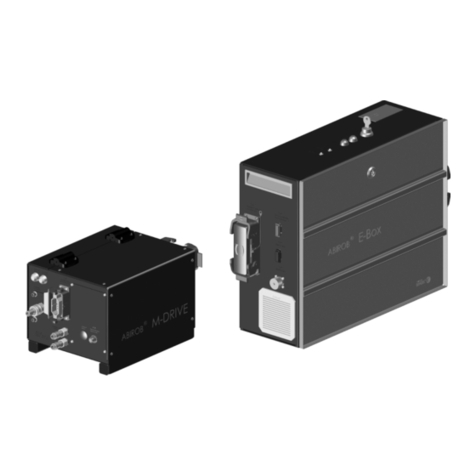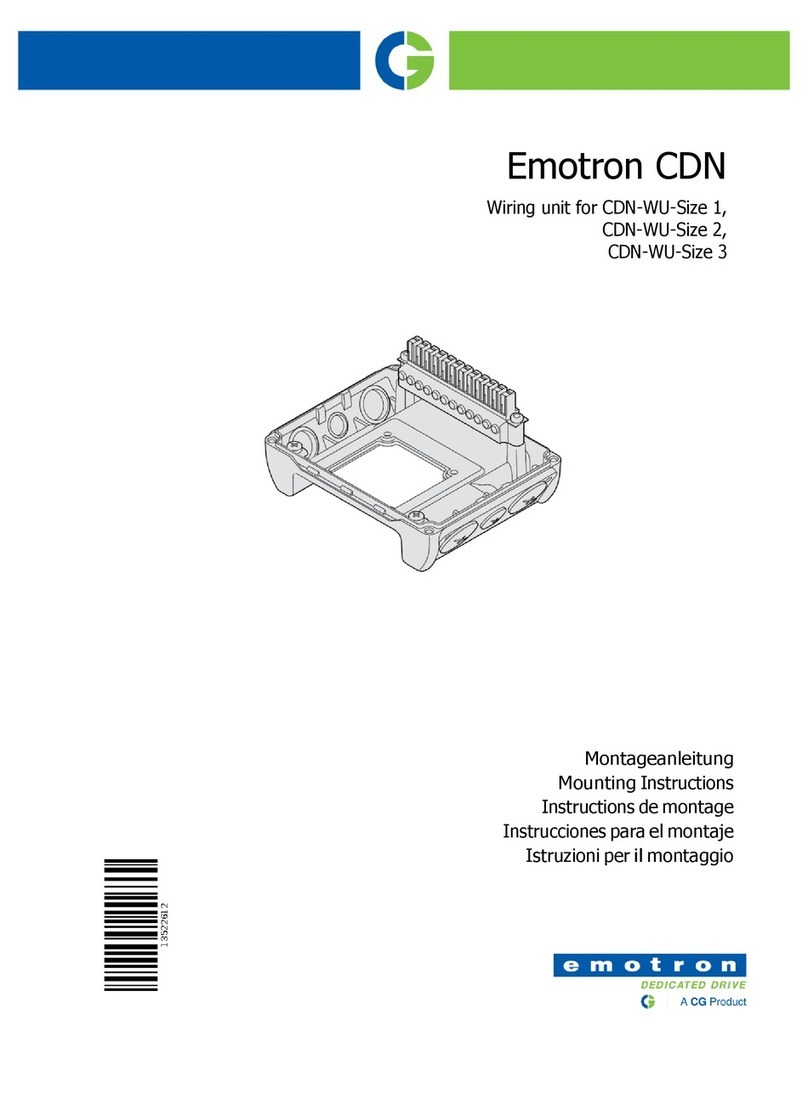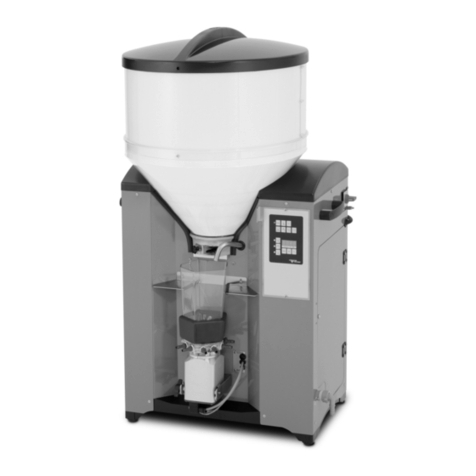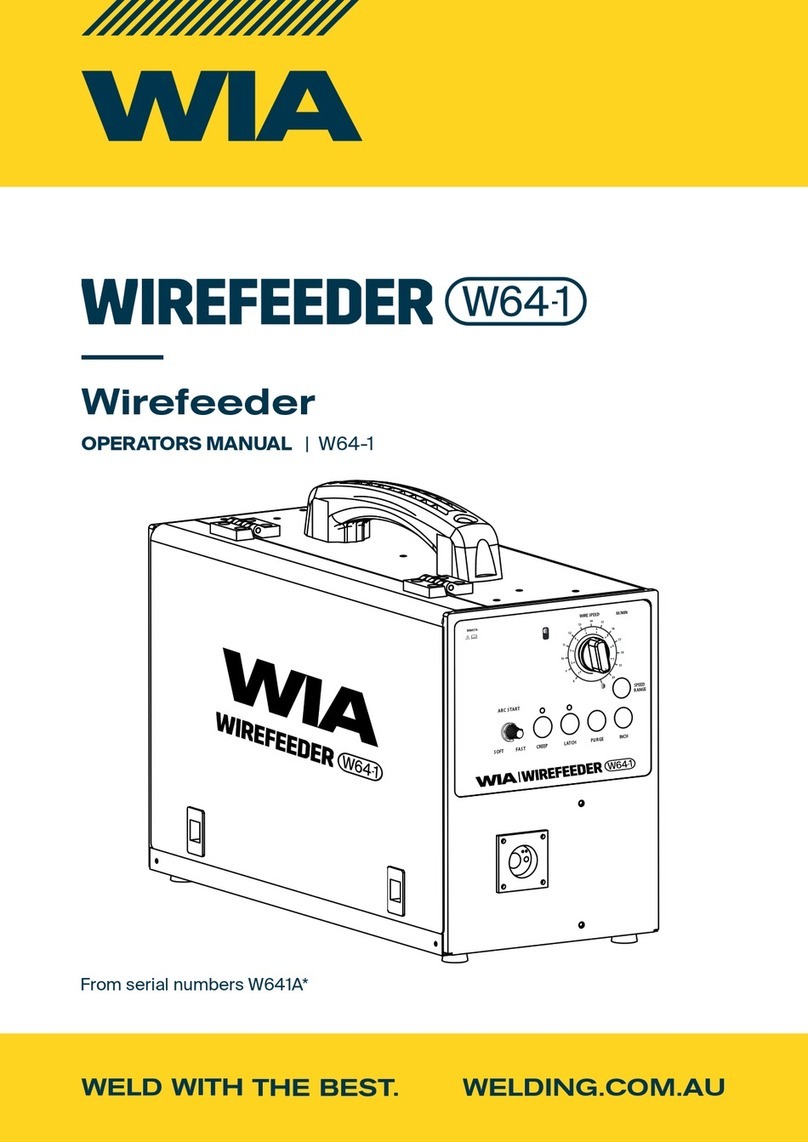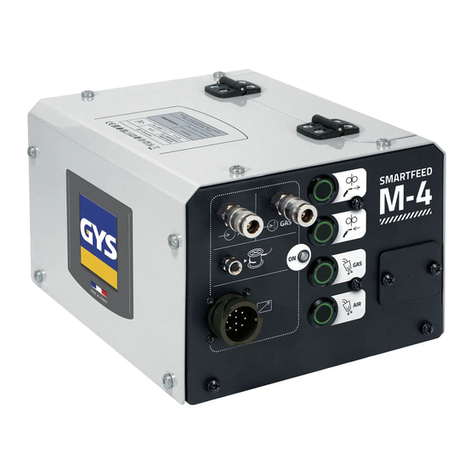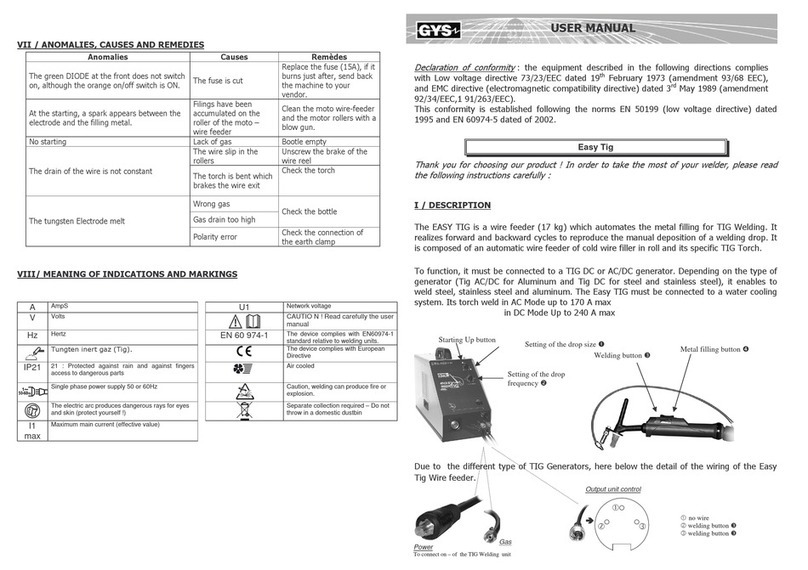
Notes on the use of these operating instructions
4 099-005508-EW501
5.8.7.1 Selecting the display unit............................................................................... 43
5.8.7.2 Operating point setting using material thickness .......................................... 43
5.8.7.3 Arc length correction setting .......................................................................... 44
5.8.7.4 Accessory components for operating point setting ....................................... 44
5.8.7.5 coldArc / coldArc puls .................................................................................... 45
5.8.7.6 forceArc / forceArc puls ................................................................................. 46
5.8.7.7 rootArc/rootArc puls ....................................................................................... 47
5.8.7.8 pipeSolution ................................................................................................... 47
5.8.8 MIG/MAG functional sequences / operating modes ..................................................... 48
5.8.8.1 Explanation of signs and functions ................................................................ 48
5.8.9 MIG/MAG program sequence ("Program steps" mode) ............................................... 61
5.8.9.1 Selection of the program sequence parameter ............................................. 61
5.8.9.2 MIG/MAG overview of parameters ................................................................ 62
5.8.9.3 Example, tack welding (non-latched) ............................................................ 63
5.8.9.4 Example, aluminium tack welding (non-latched special) .............................. 63
5.8.9.5 Example, aluminium welding (latched special) ............................................. 64
5.8.9.6 Example, visible seams (latched super pulse) .............................................. 65
5.8.10 Main program A mode .................................................................................................. 66
5.8.10.1 Selecting parameters (program A) ................................................................ 68
5.8.11 MIG/MAG automatic cut-out ......................................................................................... 68
5.8.12 Standard MIG/MAG torch ............................................................................................. 69
5.8.13 MIG/MAG special-torches............................................................................................. 69
5.8.13.1 Program- and Up- / down operation .............................................................. 69
5.8.13.2 Switching between Push/Pull and intermediate drive ................................... 70
5.8.14 Expert menu (MIG/MAG) .............................................................................................. 71
5.8.14.1 Selection ........................................................................................................ 71
5.9 TIG welding .................................................................................................................................. 73
5.9.1 Welding torch connection ............................................................................................. 73
5.9.2 Welding task selection .................................................................................................. 74
5.9.3 Welding current setting ................................................................................................. 74
5.9.4 TIG arc ignition ............................................................................................................. 74
5.9.4.1 Liftarc ignition ................................................................................................ 74
5.9.5 Function sequences/operating modes .......................................................................... 75
5.9.5.1 Explanation of signs and functions ................................................................ 75
5.9.6 TIG automatic cut-out ................................................................................................... 78
5.9.7 TIG program sequence ("Program steps" mode) ......................................................... 79
5.10 MMA welding ................................................................................................................................ 80
5.10.1 Welding task selection .................................................................................................. 80
5.10.2 Welding current setting ................................................................................................. 80
5.10.3 Arcforce......................................................................................................................... 80
5.10.4 Hotstart ......................................................................................................................... 81
5.10.5 Antistick......................................................................................................................... 81
5.10.6 Parameter overview ...................................................................................................... 81
5.11 Remote control ............................................................................................................................. 82
5.12 Interfaces for automation ............................................................................................................. 82
5.12.1 Remote control connection socket, 19-pole ................................................................. 83
5.13 Access control .............................................................................................................................. 84
5.14 Special parameters (advanced settings) ...................................................................................... 84
5.14.1 Selecting, changing and saving parameters................................................................. 85
5.14.1.1 Reset to factory settings ................................................................................ 87
5.14.1.2 Special parameters in detail .......................................................................... 88
5.15 Machine configuration menu ........................................................................................................ 98
5.15.1 Selecting, changing and saving parameters................................................................. 98
5.15.2 Aligning the cable resistance ...................................................................................... 100
5.15.3 Power-saving mode (Standby) ................................................................................... 101
6Maintenance, care and disposal.......................................................................................................102
6.1 General....................................................................................................................................... 102
6.2 Maintenance work, intervals ...................................................................................................... 102
6.2.1 Daily maintenance tasks ............................................................................................. 102
6.2.1.1 Visual inspection ......................................................................................... 102
